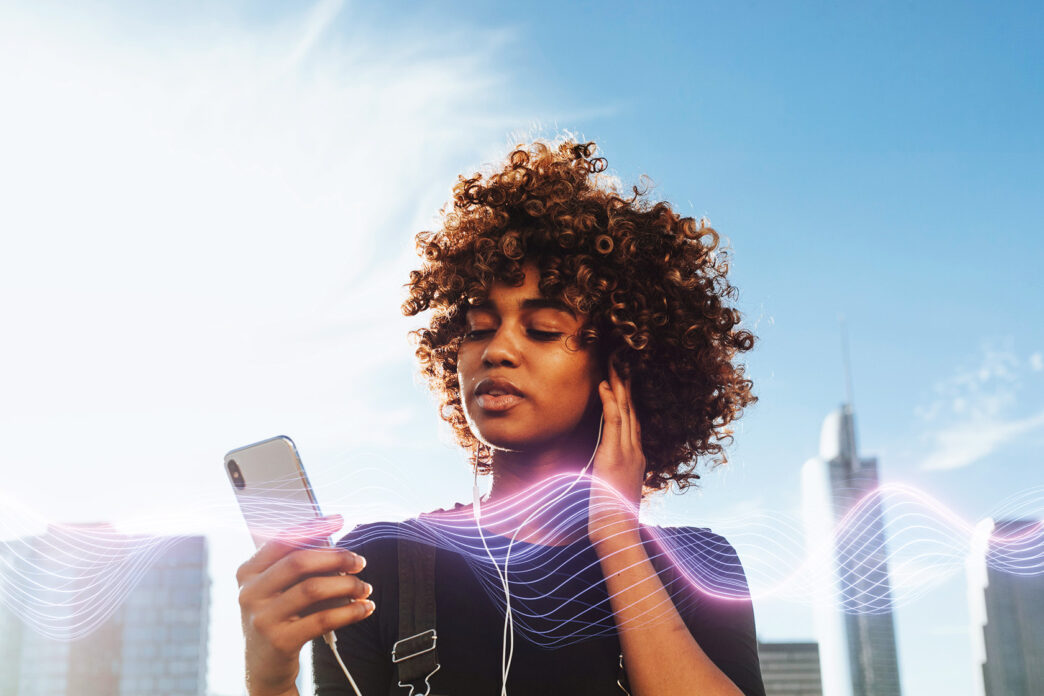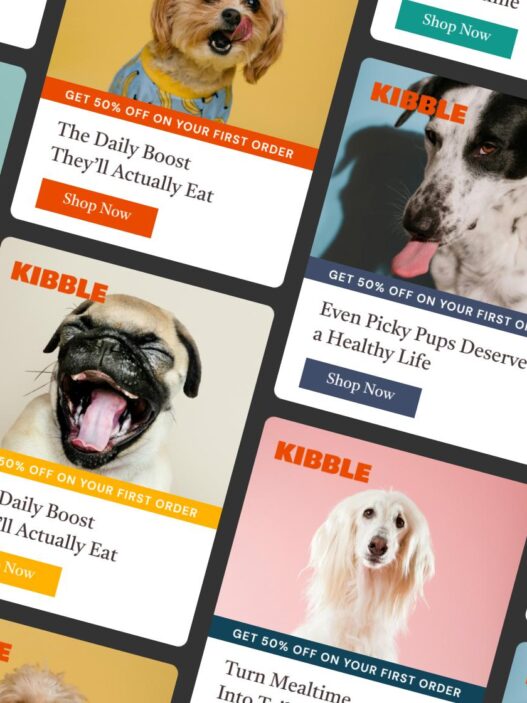The way consumers engage with audio content has transformed dramatically in recent years. From the rise of podcasts to the growth of platforms like Spotify and the increasing adoption of voice-activated devices, digital audio marketing is now at the forefront of modern advertising.
Audio advertising is no longer limited to traditional radio spots or static background music. Instead, it has evolved into a dynamic, data-driven form of marketing that creates personalized and immersive connections with audiences. This shift is giving marketers unprecedented opportunities to engage users through on-demand, contextually relevant, and highly interactive formats.
This blog explores how platforms like podcasts, Spotify, and voice search are reshaping the world of audio advertising, dives into the strategies and innovations that make them so effective, and outlines best practices to help advertisers harness the full potential of audio in the digital age.
Podcast Revolution
The Surge in Podcast Listenership
Podcasts have taken the world by storm. Recent figures reveal that over 464 million people globally now tune into podcasts, and this figure continues to climb. What’s driving this boom? Accessibility, diversity of content, and the increasing use of mobile devices have made podcasts a go-to medium for entertainment, education, and information.
The audience is as diverse as the content itself, but many advertisers target 25-to-44-year-olds, the demographic that dominates listenership. They are tech-savvy, engaged, and value authenticity, making them an ideal audience for effective marketing.
Why Podcast Advertising Works
Podcast advertising has one significant advantage over other media channels: trust. Listeners are emotionally invested in their favorite podcast hosts, whose personal endorsements function as powerful, authentic advertising.
Additionally, podcast ads benefit from the intimate listening experience. Most people consume podcasts through headphones, creating a direct and personal connection between the host and the listener. This focused environment means advertisements are less likely to be skipped or ignored, especially when seamlessly integrated into the content. Furthermore, podcasts cater to niche audiences with specific interests, allowing brands to tailor their messaging to highly relevant groups, increasing the likelihood of engagement and conversion. With growing listener numbers and high retention rates, podcast advertising continues to be an effective and evolving method for reaching targeted audiences.
Success Factors:
- Host-read Ads: Delivered in the voice of the host, these ads feel like genuine recommendations.
- Audience Targeting: Podcasts cater to niche interests, allowing highly specific targeting.
- Engagement: The non-skippable nature of podcast ads ensures that listeners pay attention, leading to higher recall rates.
Podcast Ad Success Stories
For example, BetterHelp, an online therapy platform, saw a dramatic increase in sign-ups after sponsoring multiple podcasts about mental health. Their success highlights the value of aligning products with relevant content and communities. Similarly, Squarespace saw a 10% increase in website sign-ups after sponsoring popular podcasts like Serial and Reply All. These success stories demonstrate the effectiveness of podcast advertising in reaching targeted audiences and driving conversions.
Challenges to Consider for Podcast Advertising
While podcast advertising has many benefits, there are also challenges to consider before incorporating it into your marketing strategy. Some of these challenges include:
- Limited Reach: Unlike other forms of digital advertising, podcasts have a limited reach as they primarily target a niche audience. This means that if your brand is looking to reach a larger or more diverse audience, podcast advertising may not be the most effective option. However, this can also be seen as an advantage for brands looking to target specific demographics or interests.
- Measuring ROI: Unlike traditional forms of advertising such as TV or digital ads, measuring the return on investment (ROI) for podcast ads can be difficult. This is due to the lack of standardized measurement metrics and data tracking methods.
- Difficulty in Measuring Effectiveness: It can be challenging to accurately measure the effectiveness of podcast advertising due to its audio format. Since there are no visuals, it’s difficult to track clicks or conversions in the same way you would with other forms of digital marketing. Additionally, listeners may only hear a podcast ad once and then move
To address this challenge, advertisers can use unique promo codes, offer special discounts or promotions, and track website traffic from specific podcast episodes to gauge the effectiveness of their ad. They can also work closely with podcast hosts to gather qualitative feedback from listeners about their ads.
- Limited Targeting Options: Unlike social media or search engine advertising, where advertisers can target specific demographics and interests, podcast advertising has limited targeting options. Advertisers typically have to rely on the audience demographics provided by the podcast host or network. This lack of detailed data may make it challenging for advertisers to reach their ideal audience.
However, some advancements are being made in this area. Some podcast hosting platforms now offer advanced targeting options based on listener behavior and interests. Additionally, dynamic ad insertion technology allows for more targeted and personalized ad placements.
Another advantage of podcast advertising is its long-lasting impact. Unlike traditional radio ads, podcasts are often listened to on-demand, meaning listeners can pause and resume the episode at their convenience. This makes it more likely for them to hear the entire ad and remember its message.
Moreover, podcast advertising offers a unique opportunity for host-read or endorsed ads. Hosts have built a relationship with their listeners, making their endorsements more sincere and effective. This personal touch can also lead to higher engagement rates compared to other forms of digital advertising.
Spotify’s Ad Ecosystem
Spotify’s Evolution to an Ad Powerhouse
Spotify, which boasts over 515 million active users, has emerged as a game-changer in digital audio marketing. With its blend of algorithmic precision and vast listening data, the platform enables advertisers to reach audiences with unparalleled accuracy.
Advanced Targeting and Dynamic Ad Innovation
Spotify’s advertising ecosystem thrives on dynamic ad insertion (DAI) technology, which allows marketers to target listeners with ads personalized by factors like age, location, music preferences, and even mood.
Advantages of Spotify Advertising:
- Real-time Targeting: Reach exactly the audience you’re looking for based on curated playlists and user preferences.
- Music & Podcast Integration: Run seamlessly integrated campaigns that cover both music streams and podcast episodes.
- Interactive Experiences: Enable clickable ads within Spotify’s in-app interface for direct response.
Spotify’s targeting precision is helping businesses drive measurable ROI, making it a must-have channel for brands looking to break through the noise.
Voice Search & Smart Speakers
The Rise of Voice-Activated Devices
The adoption of smart speakers like Amazon Echo, Google Nest, and Apple HomePod has skyrocketed, with over 250 million devices now in use worldwide. Voice search is quickly becoming the default way for consumers to interact with technology, offering brands new opportunities to connect with users in unique ways.
Optimizing for Voice Search
To succeed in this space, businesses must focus on voice search optimization by tailoring their content to conversational queries. By incorporating natural language and focusing on question-based search phrases (e.g., “What’s the best coffee shop nearby?”), marketers can appear in the top voice search results.
Unlocking Conversational Commerce
Smart speakers allow brands to create contextual advertising experiences and facilitate voice-activated commerce. A campaign promoting a coffee brand, for instance, can enable users to place an order simply by saying, “Order my usual coffee.”
Measurement & Analytics
Tracking Audio Advertising Performance
Measuring audio ad success requires advanced tools that track critical metrics across platforms. Key engagement metrics include:
- Completion Rates (percentage of ads fully listened to)
- Ad Recall (how well listeners remember the brand or message)
- Direct Conversions (clicks, sign-ups, or purchases linked to the ad campaign)
Tackling Attribution Challenges
Platforms like Spotify and Google are now offering integrated analytics dashboards to help solve attribution gaps in cross-platform campaigns. Identifying ROI is more achievable than ever.
Best Practices
Essentials for Audio Creative
- Clarity: Use concise messaging that resonates in just a few seconds.
- Emotion: Leverage storytelling and voiceovers to create impactful emotional connections.
- Call to Action: Always include a clear and compelling next step for your audience.
Platform-Specific Approaches
- For Podcasts: Focus on host-read ads for niche audiences.
- For Spotify: Leverage dynamic audio ads to reach users at scale.
- For Voice Search: Optimize your keywords for conversational queries like “Where can I find…”
Future Trends
AI & Personalization
AI is driving hyper-personalized content, offering real-time adjustments to ads based on user data. Imagine a coffee shop ad that adapts based on whether it’s morning or evening.
Audio SEO
As voice search grows, audio SEO will be critical. Brands should focus on optimizing their content for high-ranking queries within the voice ecosystem.
Spatial Audio
Advancements in spatial audio technology are creating immersive ad experiences, bringing ads to life for listeners.
Driving Engagement Through the Human Voice
Audio advertising is not just a trend; it’s a fundamental shift in how brands connect with audiences. Podcasts, platforms like Spotify, and voice-activated devices are proving that the right sound, delivered at the right time, can leave a lasting impression.
If you’re ready to bring the innovative power of audio advertising into your marketing strategy, start planning today. Digital audio marketing isn’t just a channel; it’s a partnership between your brand and your audience, one authentic connection at a time.
At AUDIENCEX, we specialize in helping brands unlock the full potential of audio advertising. Our team of experts can craft tailored audio campaigns that resonate with your audience and deliver measurable results. Whether you’re looking to engage listeners through podcasts, music streaming platforms, or voice-activated devices, we have the tools and expertise to elevate your marketing strategy. Contact us today to discover how we can amplify your brand’s message through innovative audio advertising solutions.



















